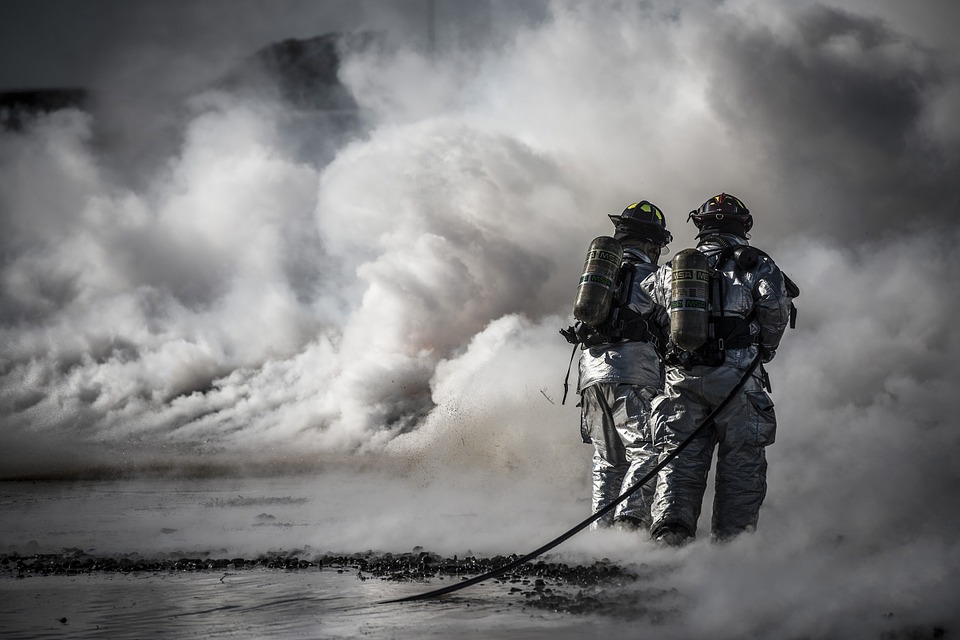Introduction on Disaster Risk Management in Schools
After we had our vacation on the northern part of Luzon, I needed to travel then in Palawan for a convention of school administrators. It was really amazing though because we were all given an opportunity to present our activities that were given emphasis in our region. I will surely share what happened to you on that occation after this post.
For this moment, I would like you all to get acquainted with Disaster Risk Reduction in schools. I find all of these information necessary to be shared because the school is a community and everyone must take part in making sure its safety. Aside from that, principles that will be mentioned can be used by various organizations and even individuals to prevent, or if not, mitigate possible hazards in the community.
Please take note that the resource material used is mentioned below.
 Fire outbreak, although can be manmade in nature in most cases, is regarded as a disaster. | Image taken from pixabay.com
Fire outbreak, although can be manmade in nature in most cases, is regarded as a disaster. | Image taken from pixabay.com The Philippines is considered one of the most disaster-prone countries. Every year, flash floods, landslides, earthquakes, and volcanic activities batter the country. In disaster or emergency situations, children are very vulnerable to illness and trauma, and require special care and attention. During these trying moments, schools offer safety and shelter to those displaced by disaster.
Schools, however should not only offer safety after disaster has struck. Our schools should also be ready even before any disaster strikes...
-Vanessa J. Tobin
Representative, United Nations Children Fund, Philippines Country Office
The words of Ms. Tobin may sound so offending on the part of some Filipinos, but we cannot deny the fact that the country is experiencing calamaties yearly. We do not actually need sources for that because we experience it on ourselves and we often hear it on the news.
If disaster risk reduction management is not properly executed by the stakeholders, then the community will suffer. Alongside with the mentioned negative effect, it will also affect the economy of the country as the government will need to allocate (depending on the severity of the hazard) budget for rehabilitation of the community and to fund projects for the communities affected.
 Photo from pixabay.com
Photo from pixabay.com Overview of Disaster Risk Reduction
Disasters are either caused by natural or man-made events. In result, different communities experience danger, destruction of lives and properties. It has been mentioned that disasters are inevitable but its effects can be lessened with proper knowledge and understanding on both mitigating and preventive measures.
In line with disaster, risk management plays a crucial role. According to the resource manual, it includes :(1) identifying safety and health hazards; (2) alongside with determining the probability of occurences; (3) estimating potential impacts to school establishments and a lot more.
The following should be quantified as essential components in identifying risk. You can take note of this and apply it at home, at your office, or at your respective organization(s):
- Hazard Occurrence Probability, this is referred to the possibility of technological and natural hazard in a certain area. It also includes identification of the probable magnitude of a possible disaster.
An example on this I will base it on my experience as an administrator. I was once a principal of a high school near the city center. It was then relocated to another area which is a mile (or so) away from the original site. The land that was purchased by the government has a small hill that might cause as a hazard in the near future as continuous rains may cause soil erotion. With this, the magnitude would be big, and the worse case scenario is an occurence of landslide during school hours.
Elements at Risk - It is pivotal for the head of the office to determine and have an inventory of the people and the properties that could be affected when hazard occurs in their respective institutions.
Vulnerability of the Elements at Risk , lastly, it is important to identify from the elements present be affected whenever hazard occurs.
As observed on the manual, school officials should not only dwell unto the post-calamity, but also must be able to manage it prior to its occurrence.
- Pre-disaster Loss Management
- Mitigation of the Risk of Disaster
- Disaster Preparedness
- Accurate Information Collection and Assessment
- Balanced Response
- Timely Actions
- Effective Leadership
- Discipline Among Those Handling Relief and Disaster Management
All of those mentioned are pivotal to minimize the possible damage. Pre-disaster loss managment deals nott only with the properties or objects in the area so it is important to take consideration also of the lives that are at stake when disaster happens.
 Image from pixabay.com
Image from pixabay.com Mitigation of the Risk of Disaster's example is capacitation of the stakeholders so that in times of disaster, people who are at risk would be fully aware what to do when disaster strikes. Aside from that, for example, planting of trees to school areas that are prone to landslides. It is also important to highlight not just the tree planting but the tree growing as well.
Disaster preparedness for example is buying of possible needed equipments when disaster strikes such as emergency lights during typhoons. Buying of relief goods is also part of the disaster prepareness.
Discipline among those who are handling relief goods is much needed in the country. For the past years, as observed, a number of local chief executives had been using the relief goods for politics. Some politicians even write their names or put Donated by:+ name of the politician although it is actually an aid from an external body.
Accurate Information Collection and Assessment plays a crucial role because without it, it would be hard to come up with balanced response, timely actions, and effective leadership.
Source: Disaster Risk Reduction Resource Manual
Republic of the Philippines
Department of Education (DepEd) 2008
Published by:
Department of Education Philippines in Partnership and with the support of the UNICEF Philippines